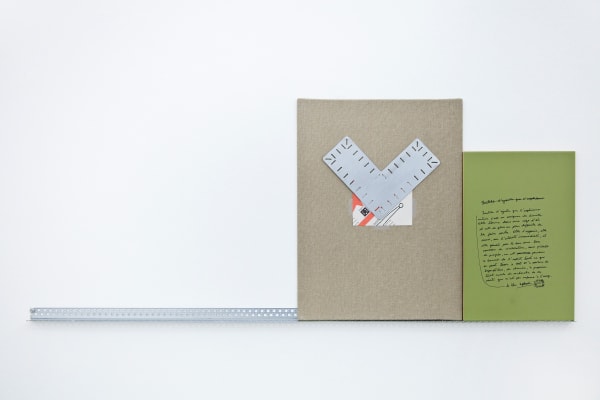Débora Bolsoni: To Calm
Night is the plaything of the day.
The day is the plaything of the sea
The sea is the plaything of life
To calm, to calm
Luiz Melodia
In a text by the artist entitled "Statue Game," which refers to the child's game known as "Statues," Bolzsoni describes "an interrupted scene in which objects, as if they were moving bodies, were surprised before arriving at their proper places, or before they reached the place they were headed." While this is happening, "the artist, peeking in deliberate amusement, lets go of controlling the materials so she can surprise them and make an abrupt and unexpected cut, as if collecting a sample of the time for study and analysis."
In the game which Bolzsoni refers to, movement is as essential as stillness. The winner is the one who avoids being seen moving, but who nevertheless moves ("eppur si muove" as Galileo said in a whisper before the tribunal of the inquisition that judged him). Whoever comes before, paradoxically, is the one who stays still the most...who moves the most is the one who moves less? These ideas may be contradictory, but they have been recurrent in metaphysics since before Aristotle, through whom we have gained the idea of the “unmoved mover.”
The unmoved mover is in essence the pure act: "that which moves without being moved." It is a kind of amoral god with no anthropomorphic characteristics. The unmoved mover is the primal cause, but it is not the creator of things, nor does it meddle with them with a sense of directed causality. This Aristotelian god attracts things by putting them in motion in the same way in which the loved one puts his lover in motion—through an attraction or force. It is not, therefore, a mechanical operation, despite what the word "mover" implies today. In the unmoved mover there is no power, only an act; but the act does not imply movement. On the contrary: the unmoved mover can be the first cause of everything only because it does not move.
Are Bolzsoni's works the ones we interrupt when we enter the scene? Where do they go? What moves them? What if they were not going anywhere? The works suggest trajectories in potency that seem to be still, to hold themselves back, to freeze when we look at them. But isn’t it the other way around? And what if they didn’t have the power of a trajectory? What if they were a pure act? That’s why these works always win: because they’re not playing the game they seem to be playing. They have already reached their destination because they weren’t going anywhere. As Bolzsoni says in the same text that I began by quoting "the cut in the timeline is only a tactic for seeking permanence. An attempt to glimpse, in the suspension of the acts, some inexhaustible essence."
Like the breaks in Luiz Melodia’s song, which gave this exhibition its name, these cuts in time are, in fact, the key to any movement, its inexhaustible essence. The force that generates movement through the power of a magnetic flux, an attraction. Like the Island of Paquetá, motionless in time, drawing Sonia Braga to it, guiding her steps. Or like the famous "forbidden zone" of Tarkovsky's film attracting the stalkers to his always indecipherable area of influence. They are not random references of the artist. Waves, cubes, or slithering snakes, paths, words, wheels, carts... we have already noticed that Bolzsoni’s works reflect on the nature of movement, but perhaps what moves is not the works but we, firmly and slowly orbiting around them.
Claudia Rodriguez Ponga














